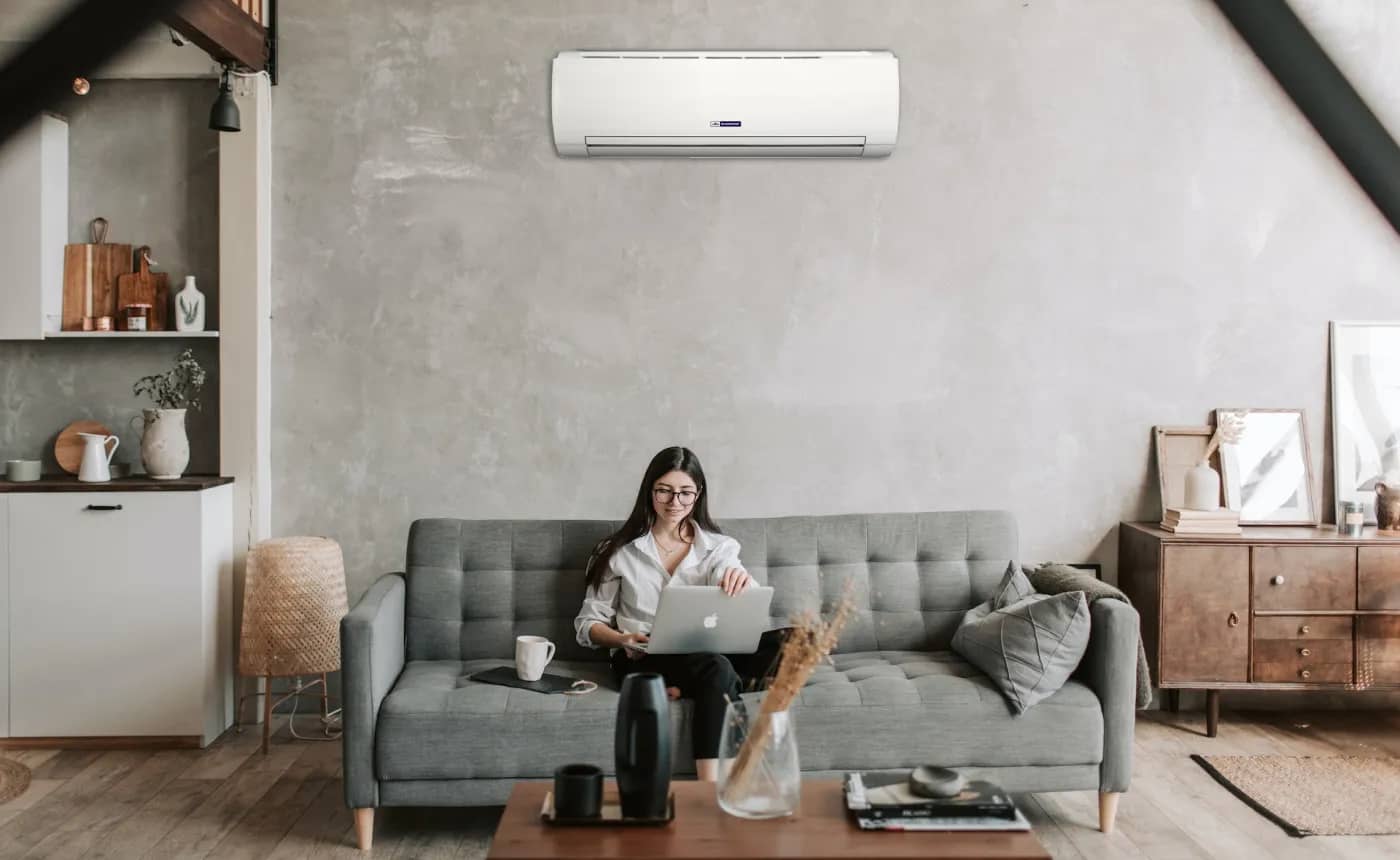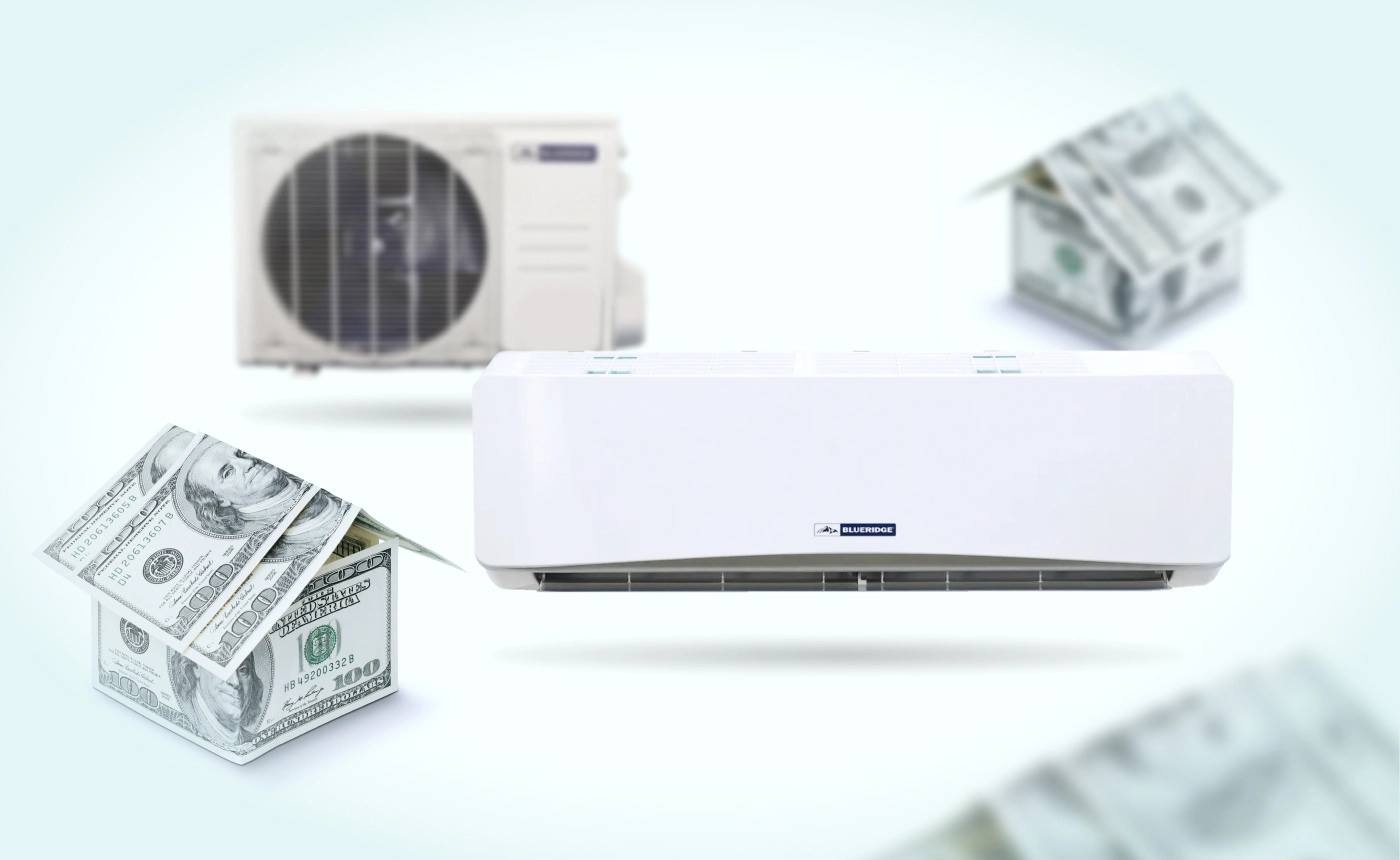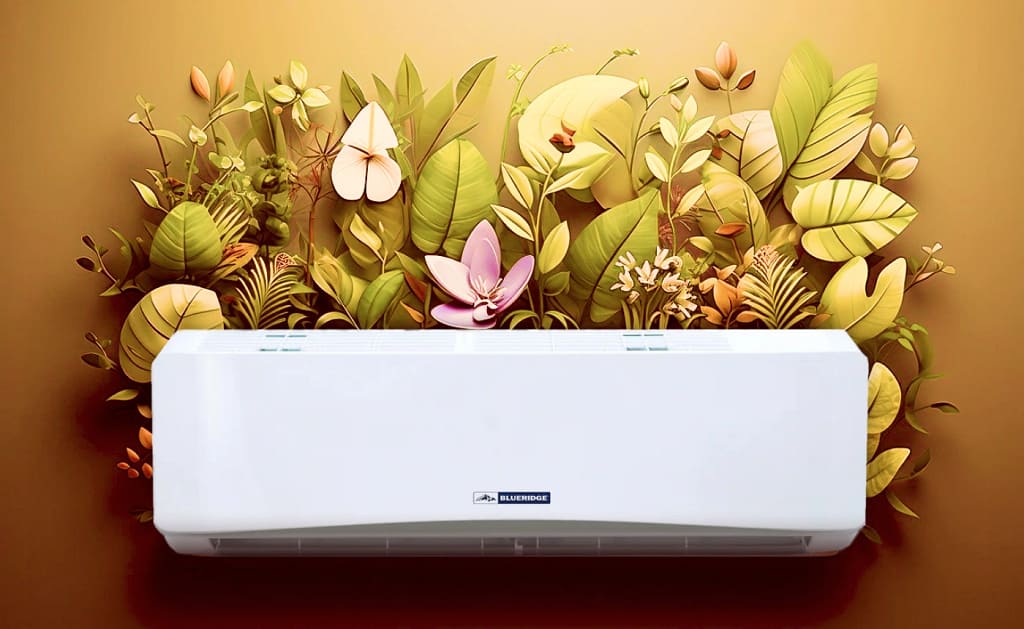
As the temperatures begin to drop, our thoughts turn away from how to stay cool in sweltering summer temps to how to keep our homes and offices comfortable without paying ridiculous heating bills this winter. One of the best ways to do this is with a ductless mini-split heating and cooling unit.
KEY TAKEAWAYS
- Mini-split heating systems offer highly efficient heating during winter, making them versatile for both cooling and heating needs.
- These systems are energy-efficient and eco-friendly, helping you save on utility bills and reduce your carbon footprint.
- The zoning capabilities of mini-split heaters allow for customized heating in different areas of the home, ensuring individual comfort while making them energy efficient at the same time.
- Proper sizing and the correct installation are crucial for optimizing the performance of a mini-split system as a heating solution, ensuring year-round comfort.
A strong and reliable heating system becomes a top homeowner priority when cooler weather arrives.

Not only that, we are now looking for ways to heat our homes that are more energy efficient and leave a lighter footprint on the planet and our wallets compared to other heating methods we have used in years past.
Suppose you have traditionally relied on central forced air systems to heat your home but are ready to try something different. In that case, it’s time to learn more about ductless mini-split systems and how they can give your home the efficient and cozy warmth you want this fall and winter.
Mini-Split Heating: How it Works
Mini-split heating operates on a simple yet clever principle.
A ductless mini-split heating system leverages the heat-exchange capabilities of refrigeration technology to extract heat from the outdoor air and efficiently transfer it indoors.
Even in weather where temperatures reach a level where you need a heavy winter coat, enough heat is present in the air for mini-splits to capture.
1. The Heat Transfer Process of Ductless Mini Splits
At the core of a mini split’s heating and cooling system is a heat transfer process that utilizes refrigerant to extract and move heat from one place to another. These systems consist of two main components: the indoor air handling unit (or units) and the outdoor unit.
The indoor units contain the evaporator coil and the fan, while the outdoor unit houses the compressor and the condenser coil.
2. Components of a Mini Split System
Indoor Unit: The indoor unit of a mini split heater contains the evaporator coil responsible for absorbing heat from the indoor air. A fan then blows air over the coil, which is heated and distributed throughout the room.
Outdoor Unit: The outdoor unit hosts the compressor, which plays a pivotal role in the heat transfer process. It pressurizes the refrigerant gas, raising its temperature and converting it into a high-pressure, high-temperature gas.
Refrigerant Lines: Refrigerant lines connect the indoor units and outdoor units, circulating the refrigerant between them. The line set with a mini split line set cover can be discretely installed wherever is more convenient for your space. The refrigerant absorbs heat indoors, carries it to the outdoor unit, releases the heat there, and then returns as a low-pressure gas to repeat the cycle.
Compressor: The compressor is the heart of the mini split system. It pressurizes the refrigerant, increasing its temperature and energy content, and preparing it for the heat exchange process.
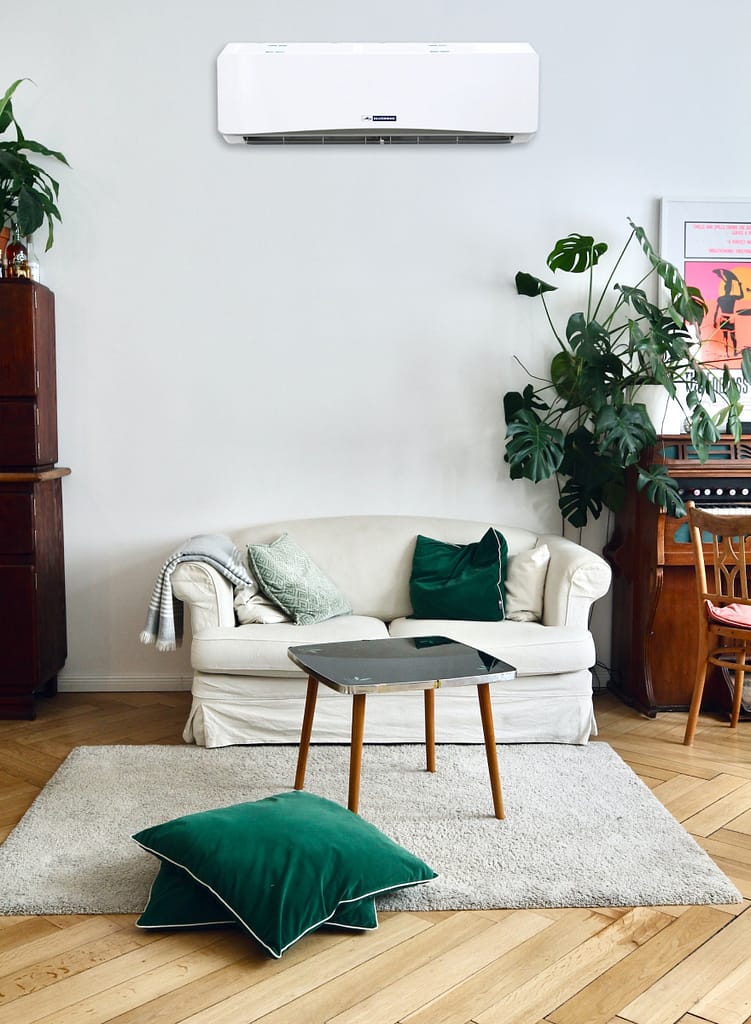
3. How Ductless Mini Split System Extract Heat from the Outdoor Air
One of the most remarkable features of mini split heaters is their ability to extract heat from the outdoor air, even in colder temperatures.
This is achieved through the heat exchange process facilitated by the refrigerant.
The refrigerant absorbs heat energy from the outdoor air, even when the temperature is low, and transfers it indoors. This process ensures a consistent and comfortable level of warmth within the living space, making mini split heaters effective even in challenging weather conditions.
By understanding the working principle of mini split heaters and their components, homeowners can appreciate the efficiency and versatility of these systems in providing reliable heating solutions for their homes.
4. Can a mini split heat a whole house?
One of the biggest advantages of mini-split systems over traditional HVAC central air systems is their ability to heat and cool a home in zones.

Zones are distinct areas or rooms within a building that can be controlled independently of one another.
An indoor air-handling unit occupies each zone, and all indoor units connect to a single outdoor unit or heat pump. The indoor unit(s) connect to the outdoor unit by lines that carry the refrigerant, creating a closed-loop heating and cooling system.
Alpine Home Air Products offers mini-split systems that can accommodate anywhere from one to five indoor units, depending on your home’s needs and your budget.
There are two basic zone mini-split systems: the single-zone mini-split and the multi-zone mini-split.

Single-zone mini-splits
Single-zone mini-splits work great when you need efficient heating and cooling for a specific room or a limited area. These systems are designed to provide targeted comfort control, making them ideal for various situations:
- Individual Rooms: Single-zone mini-splits are perfect for rooms that require personalized temperature settings. Whether it’s a bedroom, home office, or sunroom, you can keep these spaces comfortable year-round without affecting the rest of your home.
- Home Additions: If you’ve added an extension to your house, like a new bedroom or a sunroom, a single-zone mini-split can be a cost-effective solution for climate control in these areas. They don’t require extensive ductwork or any modification to your existing HVAC system.
- Garages or Workshops: Many homeowners use single-zone mini-splits to keep their garage or workshop comfortable, especially in extreme temperatures. These systems are efficient and provide quick heating or cooling as needed.
- Guest Rooms: Guest rooms often go unused for extended periods. A single-zone mini-split allows you to maintain a comfortable environment when guests are present and conserve energy when the space is vacant.
- Home Offices: With the rise in remote work, home offices have become essential. A single-zone mini-split ensures a comfortable workspace separate from the rest of the house.
- Retail or Commercial Spaces: Small retail shops or offices can benefit from single-zone mini-splits for spot heating and cooling. They are cost-effective and efficient for maintaining a comfortable environment in these spaces.

Multi-zone mini-splits
Multi-zone mini-splits are ideal when a home or workspace needs customizable climate control across multiple areas. These systems shine in these types of situations:
- Open Floor Plans: In modern homes or offices with open floor designs, multi-zone mini-splits allow you to set individual temperatures in different areas. You can maintain a comfortable living or working environment without worrying about hot or cold spots.
- Large Homes: If you have a spacious home with multiple bedrooms, living areas, or even separate living spaces like basements or attics, a multi-zone system ensures everyone can enjoy personalized comfort. No more fighting over the thermostat!
- Multi-Story Buildings: Multi-zone mini-splits are excellent for multi-story homes or commercial buildings. You can heat or cool specific floors or zones independently, optimizing comfort and energy efficiency.
- Home Additions: When you’ve added new rooms or expanded your living space, multi-zone systems are an efficient way to integrate climate control. They provide consistent comfort without the need for extensive ductwork.
- Commercial Spaces: Businesses benefit from multi-zone mini-splits, especially those with large open areas or diverse temperature requirements. They provide precise climate control for offices, retail spaces, restaurants, or warehouses.
- Zoning Preferences: Multi-zone mini-splits offer a solution if family members or employees have varying temperature preferences. Each zone can be set to the desired temperature, keeping everyone content.
- Cost Savings: Multi-zone systems help reduce energy waste by heating or cooling only the zones in use, which can result in significant energy savings over time.
Unlike central air systems with a single thermostat controlling the temperature for the entire building, mini-splits allow users to set different temperatures for different zones or rooms.

This is a great perk for homes where you like to keep a cooler temperature in one space while you prefer a warmer feel in another.
For instance, many people like to keep a slightly cooler temperature in their bedrooms, even during the winter, but prefer to keep a kitchen or family room at warmer temperatures. You could choose a 2 ton mini split for one section of your home and a 3 ton for another.
With a mini-split, you don’t have to worry about wasting energy (and money!), keeping the whole house at a set temperature when multiple rooms are unoccupied.
In office settings, these systems also offer flexibility that caters to the diverse comfort requirements of employees.
Different departments or rooms can maintain individualized climates to optimize productivity and well-being. Meetings in the conference room can be comfortably cooled or heated while the break area remains at a separate, preferred temperature.

Whether you decide that a single-zone mini-split or a multi-zone mini-split is right for your space, it is easy to understand how the versatility and efficiency of these heating and cooling systems will make a big difference in your utility costs and your comfort levels.
Advantages of Mini-Split Heating
As the temperatures drop and cooler months get closer, an efficient heating system becomes crucial for maintaining our comfort levels indoors.
Mini split heaters emerge as a remarkable solution, offering a range of advantages that make them an ideal choice for winter heating.

Energy Efficiency Through Heat Extraction
One key advantage of mini-split heating is the unit’s exceptional energy efficiency. This efficiency arises from several factors:
- No Ductwork Loss: Unlike traditional HVAC systems that distribute conditioned air through ductwork, mini-splits do not deliver air in this manner. Ducts can have significant energy losses due to leaks, uninsulated sections, or inefficient duct layouts. Mini-splits eliminate ductwork energy losses.
- Variable Speed Compressors: Mini-splits often feature variable-speed compressors that adjust their output based on the heating needs. This results in precise temperature control while minimizing energy waste.
- Zoned Heating: Mini-splits allow you to create customized heating zones within your space. You can heat only the rooms that are in use, avoiding the energy waste associated with heating the entire home or office.
- Advanced Technology: Many mini-split systems employ advanced heat pump technology that can effectively extract heat from the outdoor air even when temperatures are extremely low. This means you can rely on mini-split heat pumps even when the temperatures dip lower than your region’s seasonal average.
Zoning Capabilities for Customized Comfort
Another huge perk of a mini split heater is its ability to go beyond conventional systems by offering zoning capabilities.
A “zone” refers to a distinct area within a building or home that has its own independent temperature control.

Ductless air conditioners are capable of providing zoned heating and cooling, which means that different areas or rooms can be maintained at separate temperatures based on individual preferences and requirements. Each zone typically corresponds to a specific indoor unit of the multi zone mini split system.
So what does this mean for your heating needs in the upcoming months?
With multi zone mini splits, a homeowner or business owner can tailor the heating in different areas of a home or office to suit individual preferences.
Zoning not only ensures personalized comfort but also prevents energy wastage in unoccupied rooms. Each zone can be heated to a specific temperature, allowing everyone in the household to enjoy their desired level of warmth.
Convenience of Remote Control and Smart Features
Modern mini split heaters come equipped with user-friendly features that enhance convenience and make it easier to control the climate in a certain room or zone.
Remote control options allow you to adjust the temperature without leaving your seat, making it easy to find the perfect setting.

Not only that, but many models offer smart features that allow temperature adjustments via mobile apps. This means you can ensure a cozy environment before you even step through the door, saving both time and energy.
The Efficiency of Mini-Split Heat
Mini-split heat systems (or mini-split heat pumps) are renowned for their exceptional energy efficiency, setting them apart from conventional heating methods.
This efficiency stems from innovative technologies such as inverter technology and variable-speed compressors. These components enable precise control over heating, ensuring the system operates optimally to meet your comfort needs without excessive energy consumption.

Another key advantage of ductless mini-split systems is their ability to extract heat from the outdoor air, which is possible even in colder climates and periodic cold weather fronts.
This process, known as air-source heat exchange, allows mini-splits to deliver efficient heating even at low outdoor temperatures. This can significantly reduce heating costs when compared to those typical of central, forced air methods. This means that mini-split systems are an environmentally friendly and cost-effective heating choice.
How does the efficiency of a mini-split system compare to other heating options?
Mini-split systems are generally more efficient than traditional resistance heating methods, such as electric baseboard heaters.
They can achieve a high Heating Seasonal Performance Factor (HSPF) rating, indicating their efficiency. Compared to central heating systems like furnaces, mini-splits often offer better efficiency due to zoned heating and the ability to avoid energy losses through ductwork.

How to Keep the Heat: Maintaining your Mini Split Heater for Best Performance
Maintaining your mini split heater is crucial to ensure its long-term efficiency, performance, and the consistent warmth it provides.
By following these maintenance guidelines, you can enjoy optimal heating comfort throughout the winter season.
Maintenance Guidelines for Efficiency
- Regular Cleaning: Dust and debris can accumulate on the indoor and outdoor units, hindering airflow and reducing efficiency. Regularly clean the units using a soft cloth or brush to remove dirt and ensure proper airflow.
- Changing Filters: Air filters play a vital role in maintaining indoor air quality and system efficiency. Check and clean or replace filters as recommended by the manufacturer. Clogged filters can impede airflow and strain the system, leading to reduced heating performance.
- Scheduling Professional Inspections: Regular professional inspections by HVAC technicians are essential to detect any potential issues before they escalate. Technicians can identify and address any wear and tear, leaks, or components that require attention.

Tips to Optimize Energy Efficiency
Set Appropriate Temperature Levels: Avoid setting your mini split heater to excessively high temperatures. Setting the thermostat a few degrees lower can significantly impact energy consumption and reduce your heating costs.
Use Programmable Thermostats: Utilize programmable thermostats to automatically adjust the temperature based on your schedule. Lower the temperature when you’re away or asleep and raise it when you’re at home and awake. This practice conserves energy without compromising comfort.
Schedule Regular System Checks: Periodically inspect your mini-split system for any visible issues or unusual sounds. Addressing potential problems early can prevent more significant complications and ensure your system’s consistent performance.
Commonly Asked Questions About Using A Mini-Split as a Winter Heating Source
Ductless mini-split units are fantastic heating and cooling systems that can save businesses and homeowners a substantial amount of money each year while making their space more comfortable.
That said, for most Americans, this type of HVAC system is lesser known than the heating and cooling systems we are used to.
Knowing the answers to some of the most common questions about ductless mini splits will help you make the best choice for your comfort, budget, and the environment.

What are the advantages of using a mini-split for heating in cold climates?
Mini-splits are highly efficient in extracting heat from cold outdoor air, making them suitable for cold climates. Advantages include:

Energy Efficiency: Mini-splits use heat pump technology, which is more energy-efficient than resistance heating methods like baseboard heaters or electric furnaces.

Zoned Heating: Mini-splits allow for zoned heating. Zoning means you can control the temperature in individual rooms or zones, optimizing comfort and energy use.

Quick Warm-Up: Mini-splits can provide rapid heating compared to some traditional systems, ensuring you stay comfortable.
Are there any limitations when using a mini-split as a primary heating source?
While mini-splits are efficient and effective, there are some limitations to consider:

Extremely Low Temperatures: In cold conditions, the efficiency of a mini-split decreases, which can affect its heating capacity.
Consider a mini-split model designed for extreme temperatures if you live in an area with severe winters. Sometimes labeled “hyper heat or “ultra heat,” these systems perform better than standard mini-splits when outdoor temperatures fall below 0℉. A backup heating source may be helpful during frigid spells.

Initial Cost: Mini-split systems cost less than a central heating and cooling system with ductwork. However, a mini-split system can cost more than upgrading or retrofitting an existing central system. Remember that a mini-split’s energy savings over time will offset its initial cost.
What factors should I consider when sizing a mini-split for heating purposes?
Sizing is crucial for efficient heating. Factors to consider include:

Room Size: The square footage of the area you want to heat is a primary factor. An HVAC professional can perform a load calculation to determine the correct size.

Insulation: Well-insulated spaces require smaller units, while poorly insulated areas may need larger units.

Climate: Consider the lowest outdoor temperatures in your area to ensure the mini-split can meet your heating needs.
By addressing these questions and tips, you can make the most of your mini-split system for heating in cold climates while ensuring its long-term efficiency and effectiveness.

Are You Ready for Some Cozy Comfort this Winter? Then Call Alpine Home Air Products Today!
If you are looking for a new way to cut your winter heating costs while also increasing your family’s comfort, reach out to the experts at Alpine Home Air Products today to determine which of our mini-split systems will work best for you.
For 20 years, Alpine Home Air Products has been in the business of helping families and businesses achieve their heating and cooling needs.
Our wide range of products earn high energy star ratings and consistently receive customer reviews, making us proud to be a leader in the HVAC industry.
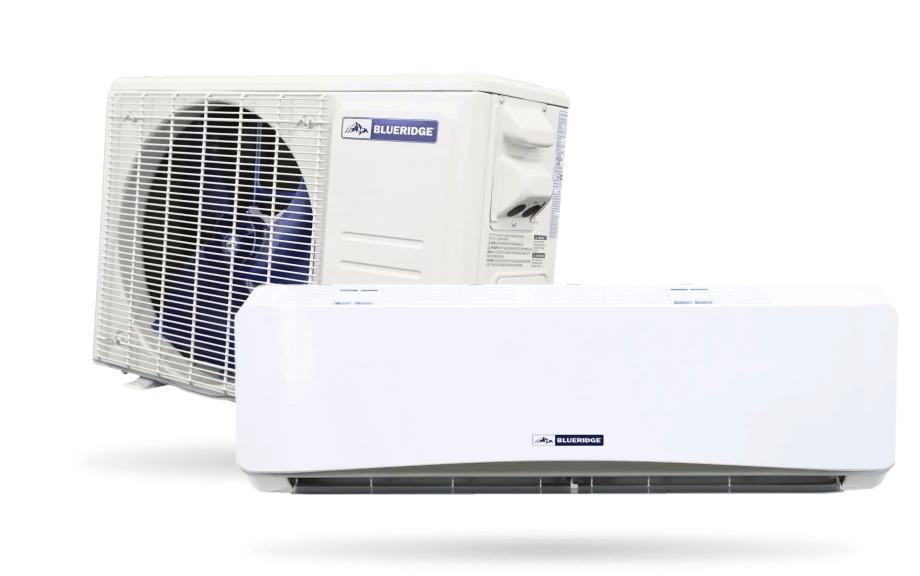
So whether you are looking for a specific type of mini-split air conditioner or are still trying to figure out where to begin, Alpine Home Air Products is excited to be your partner through every step.
We look forward to hearing from you!
